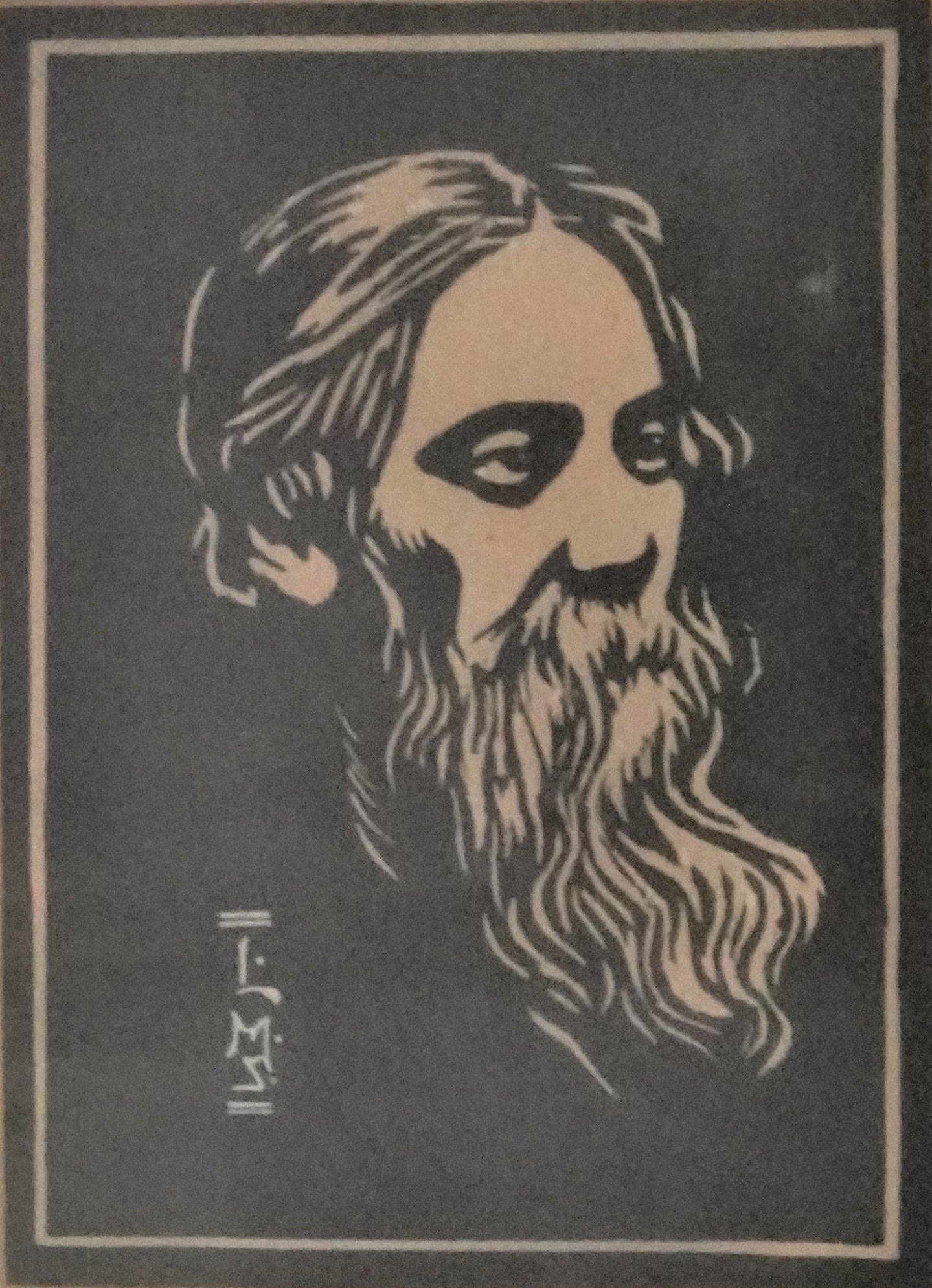
Born in 1898 in a Bengali family of Shantipur, West Bengal, Lalit Mohan Sen was sent to Lucknow at the age of eleven due to a sudden outbreak of malaria at his native place. During his stay in Lucknow, he developed a keen interest in art. His grandnephew, Prabartak Sen in an article,[1] reminisces a story of that time. He narrates how Nathanial Heard discovered Lalit Mohan’s artistic talent, the first principal of Government College School of Arts and Crafts, Lucknow, who, while crossing a bridge, caught sight of a little boy, completely absorbed in the act of sketching sitting aside that bridge. Lalit Mohan was admitted to the Art School by the sheer dint of Heard’s insistence. He completed a five-year diploma course from there and began his career as a drawing teacher at his alma mater.
In 1924, he received a government grant to study at the Royal College of Art, London. William Rothenstein was the then principal of the esteemed institution. After skilfully completing a three-year course in two and a half years, Lalit Mohan graduated with a diploma in Painting and a certificate in Wood Engraving from the Royal College of Art. In 1925, Lalit Mohan got the membership of the Photographic Society of Great Britain. During his stay in London, he exhibited his works on many occasions. Potter Girl, a painting of his, was collected by Queen Mary, wife of Georges V, for the Royal Collection. Following the retirement of Principal Asit Kumar Halder in 1945, Lalit Mohan was appointed the Principal of the Government School of Arts and Crafts, Lucknow. On 2nd October 1954, at age 54, the artist passed away in his college residence.

The history of modern Indian art is fundamentally a story of different art groups that flourished in different parts of India where each artist, despite retaining his/her independent style, appeared publicly as part of a group’s voice. Besides the Bengal School movement and Santiniketan School, there is a long list of following groups: The Calcutta Group, the Bombay Progressive Artists’ Group, Delhi Shilpi Chakra, The Madras Art Movement, the Baroda Group and so on. Lalit Mohan Sen drifted away from the specificity of these schools in temperament and created a new style and approach for his art.
As Lalit Mohan was not a part of any specific progressive art movement, it is quite justified that growing up in an English environment in British India, he would lean toward the British academic style in which he was trained. It might not be an exaggeration if I would call him a qualified successor of Raja Ravi Varma. Like Ravi Varma, he executed Indian themes in the British Academic language on his own merit. But unlike the former, he was an academician at British-Indian Art Institution. It would be unjust if we appreciate his works overlooking his role as a pedagogue. The works of this artist-teacher bestowed upon his students the skills of executing realistic proportion, and perspective, understanding light and shade, arranging space, treatment of volume using layers of tones or strong silhouettes, application of mediums like pencil, watercolour, tempera, oil, pastel, wood-cut and wood carving.
His drawings with white highlights are proof of his flair for Renaissance realism. On the contrary, western avant-garde paint application is seen in many of his oil paintings. This visual contrary is not a continuous evolutionary outcome of Lalit Mohan’s intellectual endeavour. His approach to art making might sometimes be perceived as a graphic designer who plucks different artists’ styles from different eras and puts them discretely in designing his own pictorial space. Ergo, his artistic journey, to me, is not a linear evolutionary journey like European masters but a collage of different styles of world art. This artistic versatility undoubtedly is a quintessential quality of a qualified teacher.
A rigorous discipline is another interesting quality that determines the aesthetic metre of Lalit Mohan’s oeuvre. Be it the poster for Kashmir or the designs for textiles on grid papers, his academic training casts its influence over every art he made. Three Wise Men from East, done in 1932, is one of his exceptional works. He used tempera as the medium. Was that a deliberate choice or an unconscious decision- one can’t be sure, but in his pictorial treatment, he came close to the kernel of Abanindranath Tagore’s visual treatment. Scholar Debdutta Gupta found an interesting intellectual touch in Lalit Mohan’s art where, in an artwork, Mother Mary tied her veil exactly like the way rural women of Himachal tie theirs.

Besides his artistic identity, L.M Sen was also a photographer. It is quite understandable why an academically trained artist would feel an affinity with photography. An artist’s desire to reach the epitome of realism is fulfilled in photography. Lalit Mohan’s photographic venture in rural India might have been charged by his wish to discover the various aspects of beauty through ethnographic documentation. His woodcut and linocut prints on tribal life could have been translated from those photographs. Lalit Mohan also designed many book covers and illustrated books on different genres. Undoubtedly, Lalit Mohan claims immortality through the brilliance of his portraits. In his 1936 work, ‘European Lady’, he showed his mastery in the treatment of pastels. Gandhi and Rabindranath’s portraits in print are done with strong dark and white distribution, making them stand out.

It would be prudent to look at Lalit Mohan’s oeuvre as an artist-teacher’s works. If the foundation of an edifice is not strong, no matter how massive it is, it may collapse at any point in time. At the beginning of their education, attaining command of study is an indispensable condition for all fine art students. Lalit Mohan Sen is counted among those handful of artists whose works can be used as primary books for beginners to learn the discipline of art. His artistic approach and practice make us look at ethnographic beauty and the nuances of nature and figure study in a different light. We can look forward to the future writing the saga of this unsung champion of modern Indian art.
Works cited:
- Prabartak Sen, Tarpan, Achman Vol2, Issue 03 Kartik. (Howrah: Achman, 1426) p. 15

Guruprasad Dey is an Art Historian. He is pursuing his PhD in Fine Arts at the Indian Institute of Technology Kanpur. He is a published writer both in English and Bengali. His articles have been published in many magazines, including Art and Deal.